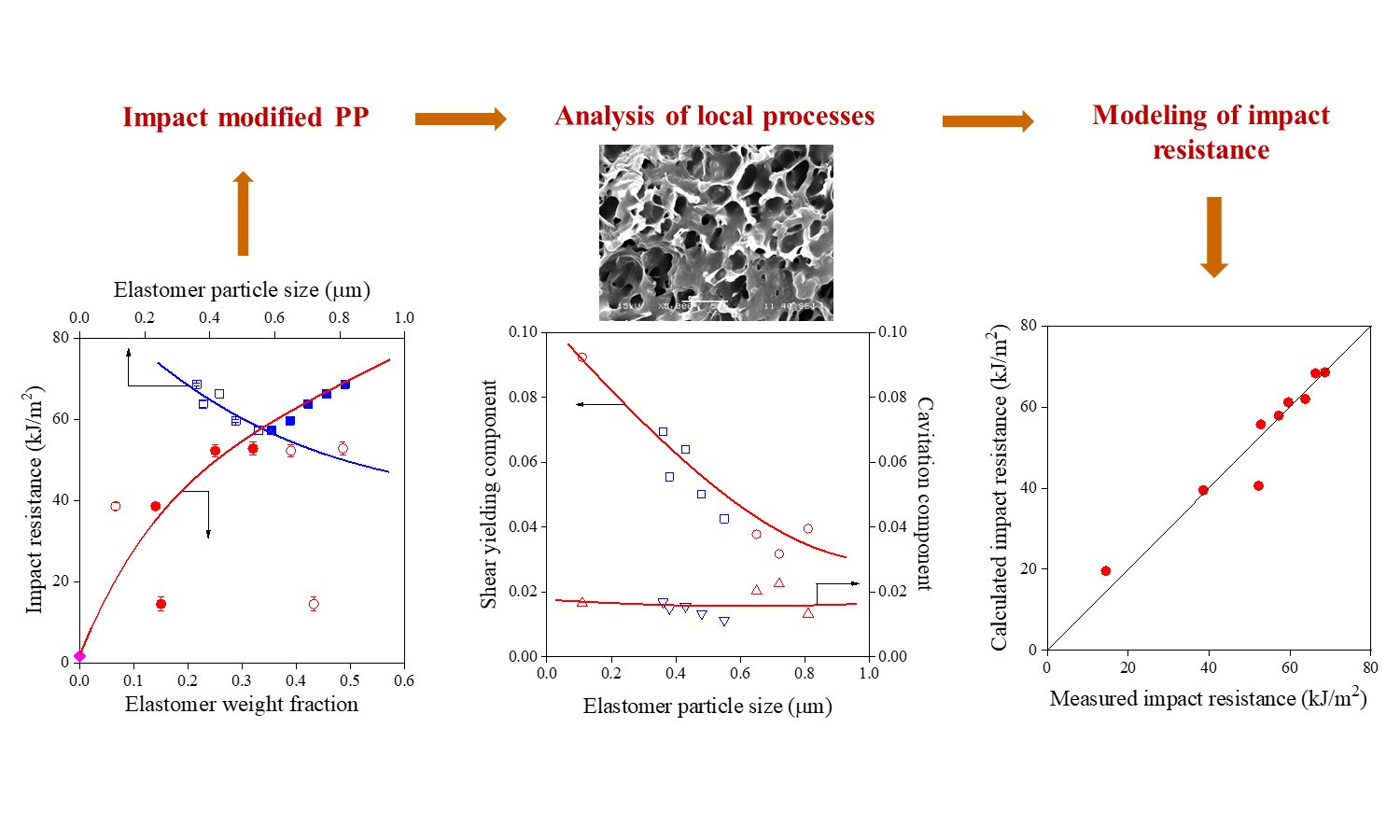Factors and processes determining the impact resistance of PP impact copolymers with multi-phase structure
Milán Ferdinánd , Michael Jerabek, Róbert Várdai
, Michael Jerabek, Róbert Várdai , Emese Pregi
, Emese Pregi , Thomas Lummerstorfer, Markus Gahleitner, Gábor Faludi, János Móczó
, Thomas Lummerstorfer, Markus Gahleitner, Gábor Faludi, János Móczó , Béla Pukánszky
, Béla Pukánszky
 , Michael Jerabek, Róbert Várdai
, Michael Jerabek, Róbert Várdai , Emese Pregi
, Emese Pregi , Thomas Lummerstorfer, Markus Gahleitner, Gábor Faludi, János Móczó
, Thomas Lummerstorfer, Markus Gahleitner, Gábor Faludi, János Móczó , Béla Pukánszky
, Béla Pukánszky
Vol. 18., No.4., Pages 406-419, 2024
DOI: 10.3144/expresspolymlett.2024.30
DOI: 10.3144/expresspolymlett.2024.30
GRAPHICAL ABSTRACT

ABSTRACT
The
impact resistance of four polypropylene impact copolymers (ICPs) with
multi-phase structures and widely differing characteristics was related to
their structure. Blends were prepared from one of them and a high-density
polyethylene (HDPE) to improve impact strength further. The structure of the
materials was characterized by microscopy and dynamic mechanical thermal
analysis. Mechanical properties were determined by tensile and impact testing,
while local deformation processes were followed by volume strain measurements.
The results obtained in the study proved that the shear-yielding of the matrix
contributes the most among local processes to the increase of impact strength,
while cavitation has a small effect on this latter property since its energy
absorption is negligible. Both increasing elastomer content and decreasing
particle size favor shear-yielding, thus improving impact strength. Considering
the importance of elastomer content and elastomer particle size, a simple but
very good model was created describing the dependence of the impact strength of
ICPs on these latter two factors by using linear regression analysis. Although
the addition of HDPE increases the fracture resistance of ICPs further, the
extent of improvement is moderate, and the approach is economically
disadvantageous.



